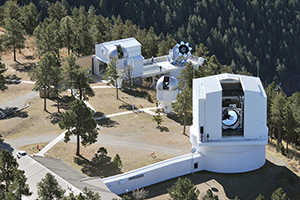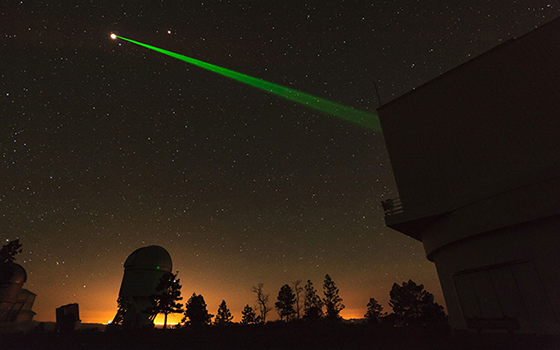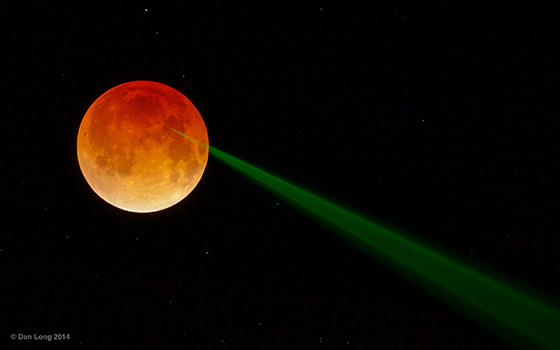APOL - Apache Point Observatory
 The Apache Point Lunar Laser Ranging Station utilizes the Astrophysical Research Consortium 3.5-meter telescope at the Apache Point Observatory
in Sunspot, New Mexico. The large collecting area of the Apache Point 3.5 m diameter telescope, good atmospheric conditions at the site, and the efficient avalanche photodiode arrays used by the station result in a high-detection rate (even multiple detections per laser pulse) leading to millimeter-level range precision.
The Apache Point Lunar Laser Ranging Station utilizes the Astrophysical Research Consortium 3.5-meter telescope at the Apache Point Observatory
in Sunspot, New Mexico. The large collecting area of the Apache Point 3.5 m diameter telescope, good atmospheric conditions at the site, and the efficient avalanche photodiode arrays used by the station result in a high-detection rate (even multiple detections per laser pulse) leading to millimeter-level range precision.
The APOLLO (the Apache Point Observatory Lunar Laser-ranging Operation) system was originally developed by the APOLLO collaboration led by Tom Murphy at the University of California, San Diego, and made its first range measurements in 2005. It was the first lunar laser ranging system to achieve millimeter-level precision. After NASA's Lunar Reconnaissance Orbiter (LRO) located the Soviet Lunokhod 1 lander in 2010, APOLLO was used to make the first range observations to the lander since 1970. This achievement added an important "new" lunar target that significantly strengthens the geometric coverage. In 2021, the station became part of the NASA Space Geodesy Network with New Mexico State University responsible for the on-site day-to-day operations and maintenance of the system.
The Apache Point station routinely ranges several times a month to the three retroreflector arrays put on the Moon by the Apollo astronauts and the two French built arrays on the Soviet Lunokhod rovers. The station is also being prepared to support ranging to the new lunar retroreflectors planned for upcoming NASA CLPS missions.
Recent news:
Complete Dataset from the Apache Point Lunar Laser Ranging Station Released
April 17, 2024
In February 2024, NASA published a set of normal points from the Apache Point Lunar Laser Ranging Station to the NASA Crustal Dynamics Data Information System (CDDIS) spanning the entire operations of the station, April 2006 through mid-January 2024. This timespan includes data prior to NASA taking over stewardship of the station that was not previously released in part due to ongoing development of software related to the Absolute Calibration System (ACS) that was installed in late 2016. NASA stewardship of the station helped continue and complete the ACS software development, which prompted a re-processing of all the data to improve its accuracy.
- Responsible NASA Official : Stephen Merkowitz
- Web Developers: 610 Web Dev
- Contact Us
- Last modified date: May 3, 2024
- Privacy Policy & Important Notices





